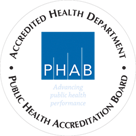How do I LOINC?
Follow the instructions on the
Vocabulary Worksheet. In short, you will find the standardized LOINC code that best represents your facility's local test codes. Your software vendor will also be able to answer any questions. For further assistance, use the LOINC lookup table at
www.loinc.orgHow do I SNOMED?
Follow the instructions on the
Vocabulary Worksheet. In short, you will find the standardized SNOMED code that best represents your facility's local result codes. Your software vendor will also be able to answer any questions. For further assistance, use the following SNOMED lookup tables at
UMLS Terminology ServicesHow do I PHINVAD?
Follow the instructions on the
Vocabulary Worksheet. In short, you will find the standardized
PHINVAD codes for Sex, Race, County Code, and Ethnicity. Your software vendor will also be able to answer any questions.
Where can I find the required HL7 segments and fields?
The list of HL7 fields on pages 7-10 of the
MSDH ELR Implementation Guide is a combination of all federal and state required HL7 fields and segments. This is the list that is used to validate whether or not a facility is ready to move into production.
Can a facility use HL7 version 2.3.1?
In order to qualify for Meaningful Use, version 2.5.1 is required. Only facilities who are not trying to qualify for Meaningful Use may use 2.3.1.
What diseases are reportable in Mississippi?
Who is required to report diseases and conditions to the state?
Mississippi is a dual reporting state. This means both the laboratory test requestor and laboratory test performer are responsible for reporting diseases and conditions to MSDH.
What are the steps to completing the ELR onboarding process?
Where can I find the Rules and Regulations regarding state disease reporting?
How does a facility/laboratory structure its ELRs if it is part of a health system network?
If the organization is using one interface to send ELR for multiple laboratories, then the performing laboratory's information must be captured in OBX23, 24 and 25 and the sending facility's information must be captured in MSH4.
What types of ELR messages does MSDH want to review?
A variety of reportable laboratory results from NM (numerical values), SN (numerical values that use greater than, less than, equal to, or ratios), and CE/CWE (coded result) formats. They should cover STD, Enteric, Vaccine preventable diseases, Blood Leads, and Tuberculosis disease and conditions. In addition, they should be as close to production level data as possible.
The facility will need to send tests performed in-house as well as those performed at the facility's reference lab(s).
Can a facility send all laboratory reports or only reportable disease reports?
A facility can choose to do either. However, if a facility chooses to send all laboratory reports, then MSH19 must be populated with an "R" for reportable diseases and conditions or an "N" for those results that are not reportable to MSDH.
Do Reference Laboratory reports have to contain LOINC and SNOMED codes?
The sending facility is responsible for ensuring that the reference laboratory results that will be sent to MSDH contain LOINC, SNOMED and PHIN VADS codes within the ELRs.
Once a facility is in full ELR production does it still need to call in Class 1 diseases?
Yes, the facility will still need to call Class 1 diseases to MSDH.
Reporting Hotline: 1-800-556-0003
Monday-Friday, 8:00am - 5:00pm
Class 1 Conditions may be reported nights, weekends, and holidays by calling: (601) 576-7400
What is the Direct Messaging ELR e-mail address?
What is parallel testing?
Parallel testing is one of the end stages in the ELR process. When the facility's HL7 message structure and quality are approved, the facility will send both ELRs and manual reports at the same time for a given period. During this time, the ELRs and manual reports will be cross-examined to see if the ELR feed is capturing all of the reportable diseases being sent from the facility. The facility will also need to provide a weekly case listing of what was reported to MSDH. The case listing needs to include: Last Name and First Name, Accession Number, Birthdate, Performing Laboratory, Date of Report, and Disease/Condition.
If a field is marked as "Required but Empty" (RE), does the facility still have to put in the field pipes?
Yes, the field pipes must be present for all Required but Empty (RE) fields. The facility will have to be able to demonstrate that it could populate the field if the information was available. The facility is not required to report the information, only demonstrate the ability.
Why are some fields marked as Preferred (P) fields?
The Preferred fields would help the public health programs (Epidemiology, STD/HIV, Lead, and Tuberculosis) perform public health investigations. However, the facility is not required by federal or state law to provide that information. It is helpful additional information for the State Health Department.
Does a facility have to use county PHINVAD codes in PID 11.9 if the patient is from outside of Mississippi?
Only Mississippi counties need to be
PHINVAD coded; however, if the EHR is capable of sending the out-of-state county name, then this information would be helpful to receive.

